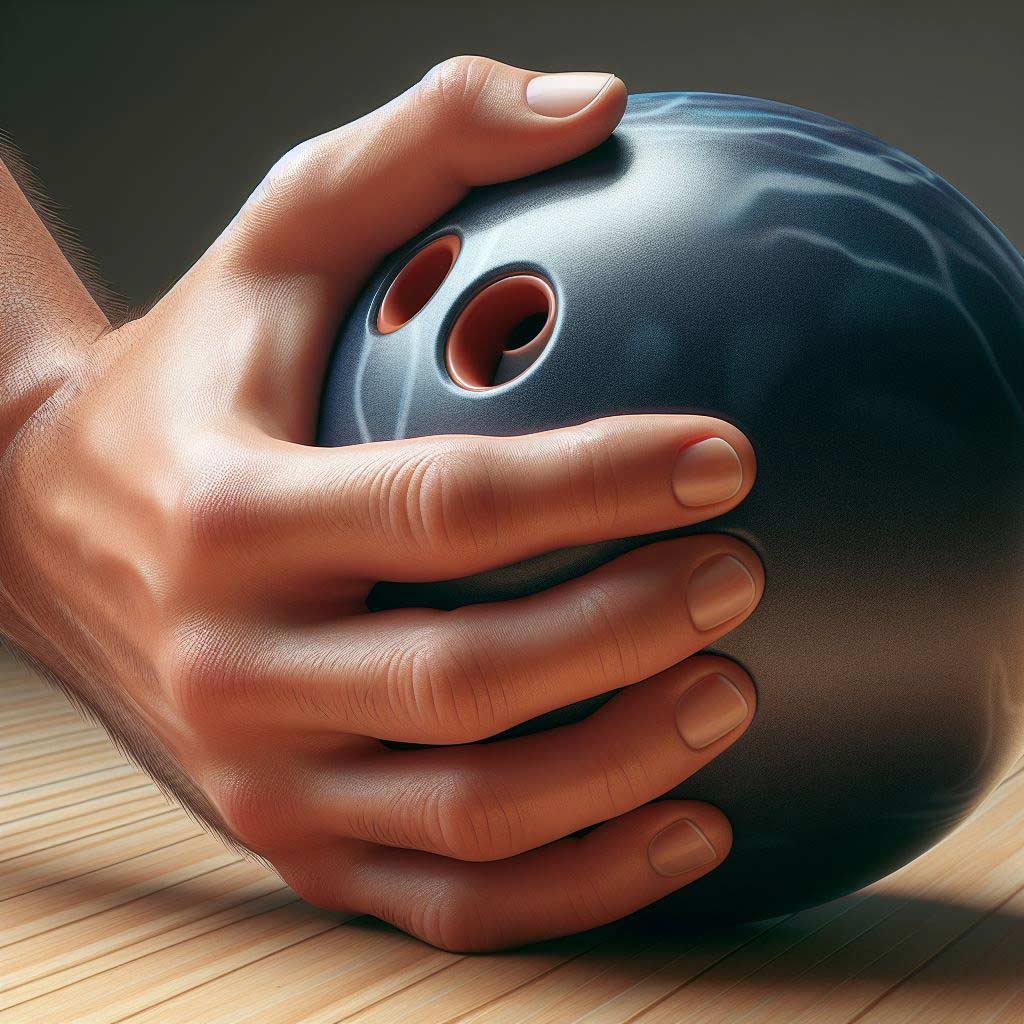If you’ve ever gone bowling, you’ve undoubtedly noticed the distinct 3-hole design of standard bowling balls. This ubiquitous feature is so synonymous with the sport that it’s easy to take it for granted. However, have you ever stopped to wonder – why exactly do bowling balls have 3 holes?
There’s actually a fascinating story behind this iconic bowling ball design. Far from being an arbitrary or aesthetic choice, the 3 holes serve a vital functional purpose that is essential to the mechanics and ergonomics of the sport. In this comprehensive blog post, we’ll dive deep into the reasons why bowling balls are engineered with this distinctive 3-hole pattern.
The Ergonomic Necessity of 3 Holes
To understand the reasoning behind the 3-hole bowling ball design, we first need to explore the mechanics of how a bowler grips and releases the ball. Proper grip and release technique are fundamental to achieving accurate, controlled shots in bowling.
When you pick up a bowling ball, you’ll notice that your fingers naturally fit into the 3 pre-drilled holes. This is no coincidence – the placement of these holes is intentionally designed to provide bowlers with a secure, comfortable, and controllable grip.
The human hand is naturally shaped with 4 fingers and a thumb. By aligning the 3 holes to accommodate these digits, bowlers are able to establish a firm, steady grip that allows them to manipulate the ball during their approach and release. Trying to grip a bowling ball with only 2 or 4 holes would feel awkward and unstable in comparison.
Additionally, the specific positioning of the holes takes into account the different lengths and strengths of each finger. The thumb hole is typically larger and deeper to provide a snug, stable fit. Meanwhile, the finger holes are slightly smaller and shallower, aligning with the natural curvature and grip strength of the index and middle fingers.
This ergonomic design enables bowlers to maintain control of the ball throughout their swing and release. The 3-hole pattern helps the ball stay firmly in place in your hand, minimizing the risk of it slipping or rolling prematurely. This translates to improved accuracy, ball control, and overall performance on the lanes.
Improved Weight Distribution and Balance
Another key function of the 3-hole bowling ball design is its impact on the ball’s weight distribution and balance. Proper weight and balance are crucial factors that affect how the ball rolls, hooks, and carries through the pins.
Bowling balls are built with a core or weight block positioned slightly off-center. This asymmetrical weight distribution is what gives the ball its characteristic hook or curve as it rolls down the lane. The placement of the 3 holes in relation to this weight block plays a vital role in achieving the desired ball motion.
By strategically positioning the holes around the ball’s center of gravity, manufacturers are able to fine-tune the ball’s balance and weight distribution.
The thumb hole, being the largest and deepest, acts as the primary stabilizing point. Meanwhile, the finger holes are arranged to complement this central axis of weight, ensuring the ball rotates and rolls smoothly.
This careful balance prevents the ball from rolling unevenly or exhibiting unpredictable behavior on the lane. With the weight properly distributed, the ball is able to maintain a consistent, controllable trajectory – critical for achieving accurate, reliable shots.
Interestingly, some advanced bowling balls also feature an additional hole, known as a “balance hole.” This extra hole is drilled to further refine the ball’s weight distribution, allowing bowlers to customize the ball’s performance characteristics to their specific needs and style.
Enhanced Comfort and Accessibility
Beyond the technical advantages, the 3-hole bowling ball design also plays an important role in enhancing comfort and accessibility for bowlers of all skill levels and physical abilities.
Bowling is a sport that requires a considerable amount of hand strength and dexterity. Gripping a heavy ball and maintaining control through the release can be challenging, especially for beginners or those with limited hand mobility. The 3-hole pattern helps to alleviate this burden by providing a more customizable, ergonomic fit.
The varying hole sizes and positions accommodate a wide range of hand sizes and finger lengths. Bowlers can choose balls with holes drilled to match their individual hand dimensions, ensuring a secure, comfortable grip. This customization helps reduce strain and fatigue, allowing bowlers to maintain their form and technique throughout an entire game.
Furthermore, the 3-hole design makes the sport more inclusive and accessible to a diverse range of participants. Individuals with physical disabilities or limitations, such as missing or injured fingers, can still effectively grip and control the ball by selecting a ball with appropriately positioned holes.
This accessibility factor has played a significant role in the widespread popularity and growth of bowling over the decades. By catering to bowlers of all backgrounds and abilities, the 3-hole pattern has helped make the sport more welcoming and approachable for everyone who steps up to the lane.
Historical Origins and Evolution
The origins of the 3-hole bowling ball design can be traced back to the early 20th century, as the sport of bowling began to gain widespread popularity in the United States and around the world.
Prior to this period, bowling balls often featured a more varied and experimental array of hole configurations, including 2-hole, 4-hole, and even 5-hole designs. However, as the game became more standardized and competitive, the 3-hole pattern gradually emerged as the dominant and preferred choice among bowlers.
There are a few key factors that contributed to the 3-hole design’s rise to prominence:
- Ergonomic Optimization: As discussed earlier, the 3-hole configuration was found to provide the most natural, comfortable, and controllable grip for the human hand. This ergonomic advantage made it the preferred choice for serious bowlers seeking to maximize their performance.
- Standardization and Regulation: As bowling organizations and leagues began to establish formal rules and equipment standards, the 3-hole design was widely adopted as the industry norm. This helped ensure consistency and fairness across competitive play.
- Technological Advancements: Improvements in ball manufacturing and drilling techniques allowed manufacturers to precisely engineer the 3-hole pattern for optimal weight distribution and balance. This further solidified the design’s practical advantages.
Over the decades, the 3-hole bowling ball has undergone various refinements and evolutions, but the core design has remained remarkably consistent. Subtle variations, such as the addition of balance holes or adjustments to hole size and placement, have been introduced to cater to the changing needs and preferences of modern bowlers.
However, the iconic 3-hole pattern has firmly cemented its place as the universally recognized and accepted standard for bowling balls. Its function-driven design has proven to be so well-suited to the sport that attempts to introduce alternative configurations, such as 2-hole or 4-hole balls, have largely failed to gain widespread traction.
Conclusion
The 3-hole design of bowling balls is not just an arbitrary or aesthetic choice – it serves a vital functional purpose that is fundamental to the mechanics and ergonomics of the sport.
By providing a secure, comfortable, and balanced grip, the 3-hole pattern enables bowlers to maintain control of the ball throughout their swing and release, leading to improved accuracy, performance, and consistency on the lanes.
Beyond the technical advantages, the 3-hole design also plays a crucial role in enhancing the accessibility and inclusivity of bowling. By accommodating a wide range of hand sizes and physical abilities, this iconic feature has helped make the sport more welcoming and enjoyable for bowlers of all backgrounds.
The enduring popularity and dominance of the 3-hole bowling ball design is a testament to its ingenious engineering and the thoughtful consideration of the bowler’s needs.
As you step up to the line and prepare to roll your next frame, take a moment to appreciate the purposeful design that enables you to perform at your best. The 3 holes in your bowling ball are more than just a quirky feature – they’re an integral part of what makes the sport of bowling such a unique and captivating experience.





